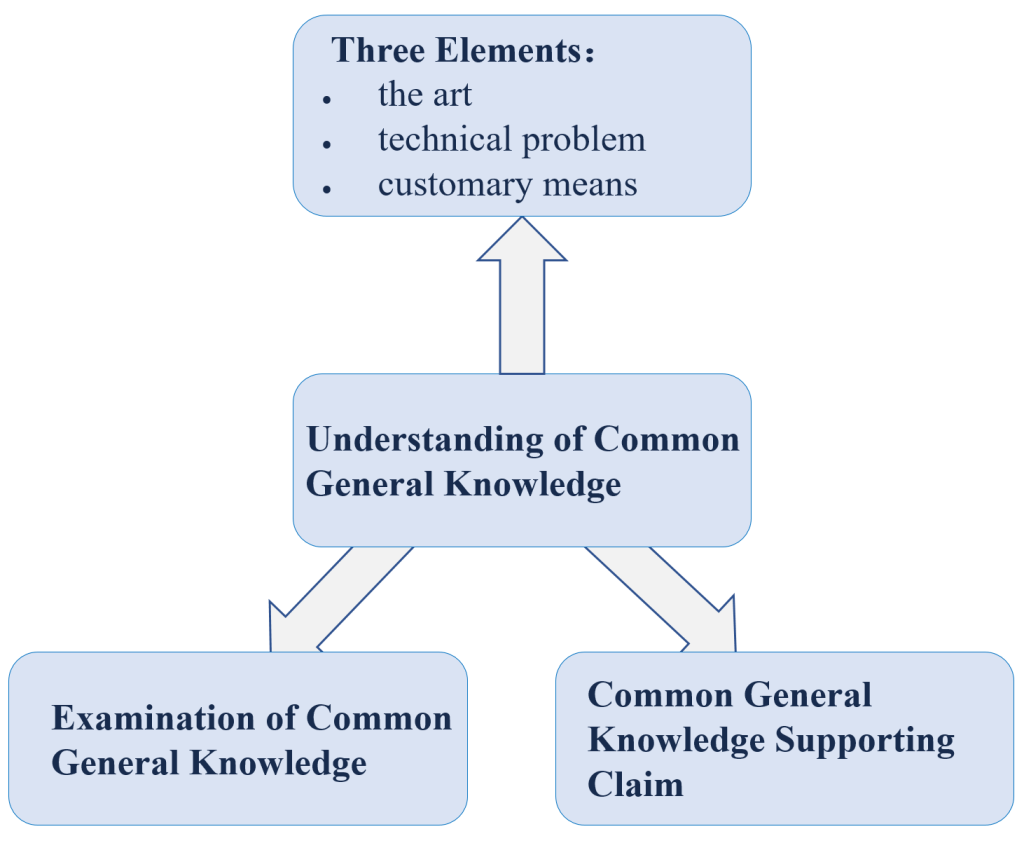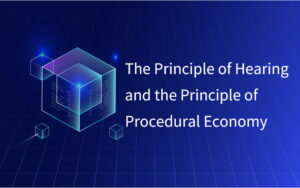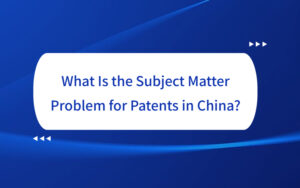Common General Knowledge for Patents in China
In the examination procedures of patents in China, it is very common to deny the inventive step on the grounds of “common general knowledge”. It it real that in an office action, the distinguishing technical features of Claim 1 are not inventive because they are considered to be “common general knowledge” and the additional technical features of dependent claims are also not inventive because of the same reason. It should be noted that expressions, like “normal technical means,” “conventional settings,” and “common general knowledge”, appearing in office actions can be considered as “common general knowledge”.
Once a claim is identified by the examiner as “common general knowledge”, will the inventive step of this claim be denied directly? This article will give you an answer.

Understanding of Common General Knowledge
The concept of common general knowledge has never been clearly defined in the laws and regulations related to Chinese patent, but examples of what circumstances can be judged as common general knowledge have been given in Section 3.2.1.1 of Chapter 4 of Part II of Guidelines for Patent Examination. This section also stipulates that “The said distinguishing feature is a common general knowledge, such as a customary means in the art to solve the redetermined technical problem, or a technical means disclosed in a textbook or reference book to solve the redetermined technical problem. ”
Common general knowledge, as the name suggests, should have the property of being generally known, and can also be understood as a well-known textbook or reference book. For example, technical dictionaries, technical manuals, etc. can all be sources of common general knowledge. At the same time, three elements are required for the judgment of common general knowledge:
- in the art
- technical problem
- customary means
In other words, if a certain technology of the claim is indeed a customary means to solve the technical problem in the art of the application, this technology can be judged as common general knowledge. The three elements are indispensable for judgement. For example, if a textbook in other arts indicates that the technology can be used to solve other technical problems, there is a problem that this technology is considered ascommon general knowledge.
Examination of Common General Knowledge
“Common general knowledge” is usually used to evaluate the inventive step, not novelty or patentability in the examination process. More specifically, after determining the distinguishing technical feature of the closest reference document, the examiner will evaluate the inventive step of the claim according to whether the distinguishing technical feature is obvious to person skilled in the art. If the distinguishing technical feature belongs to common general knowledge, the inventive step will also be denied. In other words, common general knowledge is only one of the factors affecting inventiveness.
It should be kept in mind that patent examination itself is subjective. If the technology for distinguishing technical features is relatively simple or related to public life, it may be considered as “common general knowledge”. Its subjectivity has led to the abuse of common general knowledge during the examination process, as well as disputes between applicants and examiners over whether a feature is “common general knowledge”.
However, “common general knowledge” is not examiner’s one-way communication, and it should adhere to the principle of “the burden of proof lies upon him who affirms”. The Guidelines for Patent Examination give relevant provisions on the proof of common general knowledge.
- Section 4.10.2.1 of Chapter 8 of Part II of Guidelines for Patent Examination states that “The common general knowledge of the art cited in the Office Action by the examiner shall be accurate. Where the applicant has objections to the common general knowledge cited by the examiner, the examiner shall provide corresponding evidence for proof or state the reasons. In the Office Action, when the examiner identifies the technical features in the claims that contribute to the solution of the technical problem as common general knowledge, the examiner shall usually provide evidence for proof.”
- Section 4.3.3 of Chapter 8 of Part IV of the Guidelines for Patent Examination provides the provisions on the reexamination and the examination of invalidation requests as follows: “The party concerned alleging that certain technical means is common general knowledge in the art shall bear the burden of proof for its allegation. If the party concerned cannot produce evidence or cannot adequately explain that the technical means is common general knowledge in the art, and the allegation is not acknowledged by the opposite party, the panel shall not support the allegation. The party may prove that certain technical means is common general knowledge in the art with reference to the technical contents recorded in a reference book such as a textbook, a technical dictionary, or a technical manual.”
It can be seen that no matter in the normal examination stage, or in the reexamination stage or the invalidation examination stage, if the examiner considers a certain technical point as common general knowledge, the examiner is obliged to provide evidence for proof upon the request of the applicant. However, in practice, the examiner can also ignore the applicant’s request for proof. So, it is useless to force the examiner to respond by requesting evidence for obvious prior art. In short, whether the examiner’s response method is reasonable should be judged with specific matters.
Common General Knowledge’s Supporting Function for Claim
The above mainly introduces the influence on the inventive step when a certain technical point is identified as common general knowledge. Also, common general knowledge has added value. Common general knowledge can be used to illustrate the claims or specification to prove that person skilled in the art can realize the invention based on the application documents, that is, the technical content is fully disclosed.
In some special cases, common general knowledge can also be used as a bottom line. According to Article 26.3 of the Patent Law, “The specification shall give a clear and complete description of the invention or utility model, which shall be realized by those skilled in the art.” When the examiner or the patent invalidation petitioner considers that a certain solution is “unclear and cannot be implemented”, the patentee will use common general knowledge as his/her final explanation after efforts are redoubled but useless to argue.
Response to OA on the Ground of Common General Knowledge
In response to OA on the ground of common general knowledge, we can defend against the three elements of “common general knowledge”. Simply put, the defense can be based on whether it is customary, whether it solves the same problem, and whether it belongs to the same art.

